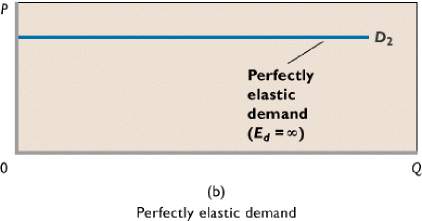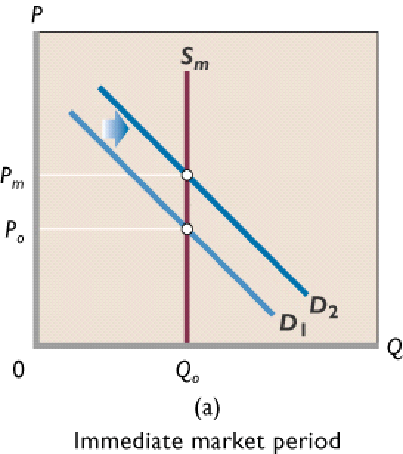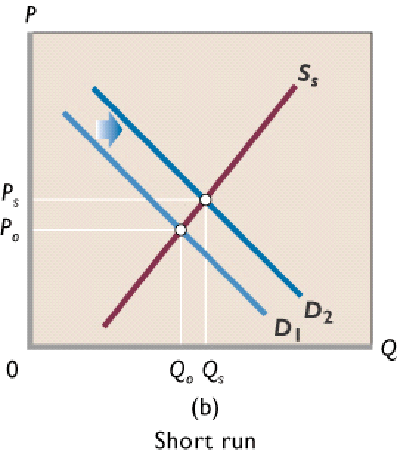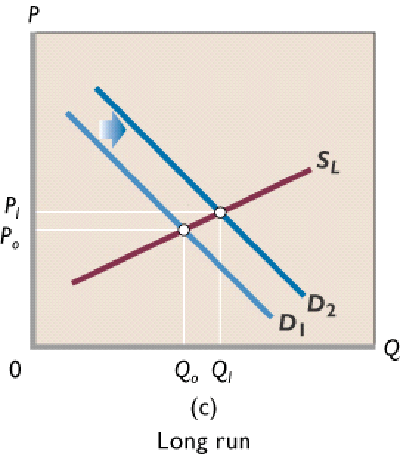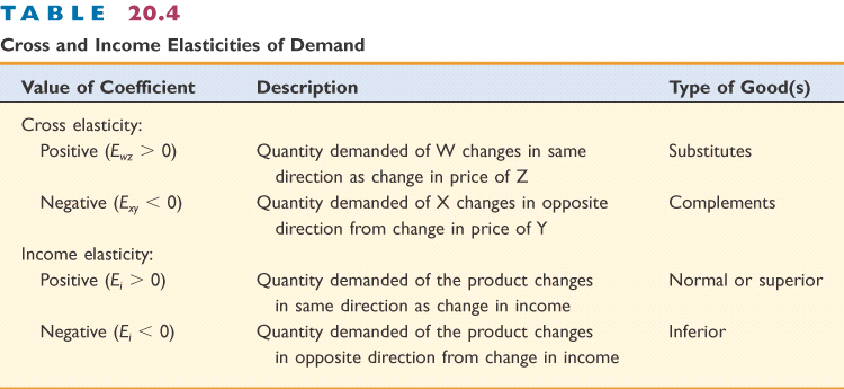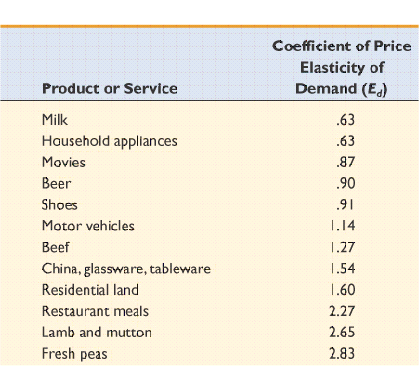1. Calculating Total Revenue (TR)
a.
Definition
- The total number of
dollars received by a firm (or firms) from the sale of a
product;
- equal to the quantity
sold (demanded) multiplied by the price at which it is
sold.
b. Formula
2. Total Revenue Test
A test to determine
elasticity of demand between any two prices
3. Summary of Total Revenue Test
a. when demand is price elastic:
(1) and P , then TR
, then TR (because
quantity
(because
quantity  a lot)
a lot)
(2) and P , then TR
, then TR (because
quantity
(because
quantity  a lot)
a lot)
Demand is elastic if
total revenue moves in the opposite direction as
price;
b. when demand is price
inelastic:
(1) and P
 , then TR
, then TR (because quantity
(because quantity  a little)
a little)
(2) and P  ,
then TR
,
then TR (because quantity
(because quantity  a little)
a little)
Demand is inelastic when
total revenues move in the same direction as
price;
c. when demand is unit
elastic: TR does not change if P
changes
Demand is of
unitary elasticity when total revenues do not change when
price changes.
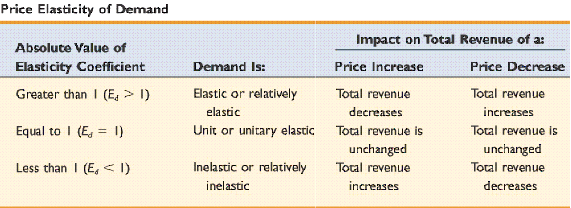
4. Graphic Portrayal
a. elastic demand
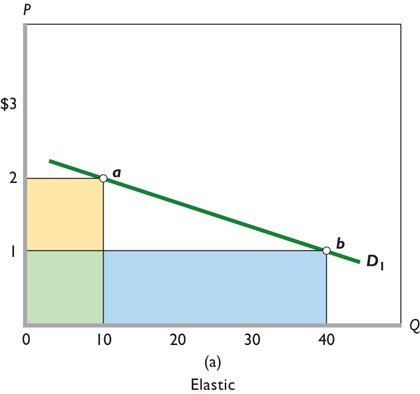
- if demand is elastic and the price goes up
from $1 to $2, what happens to TR?
- P=$1: TR = P x Q = $1 x 40 = $40
- P=$2: TR = P x Q = $2 x 10 = $20
b. inelastic demand
|
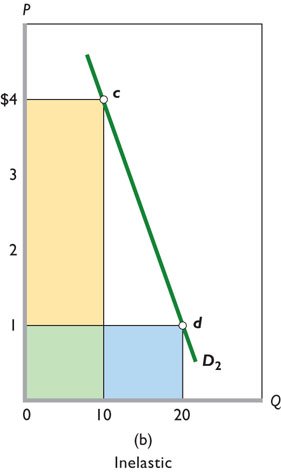
|
- if demand is inelastic and the
price goes up from $1 to $4, what happens to
TR?
- P=$1: TR = P x Q = $1 x 20 =
$20
- P=$4: TR = P x Q = $4 x 10 =
$40
|
c. unit elastic demand
|
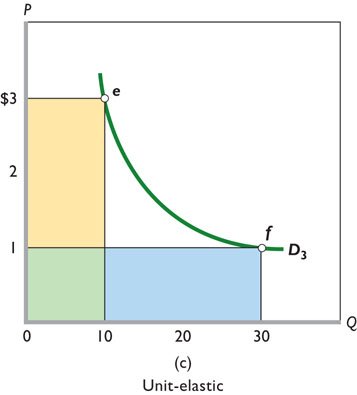
|
- if demand is unit elastic and the
price goes up from $1 to $3, what happens to
TR?
- P=$1: TR = P x Q = $1 x 30 =
$30
- P=$3: TR = P x Q = $3 x 10 =
$30
|
5. The Total Revenue Graph
a. shape of the graph:
|
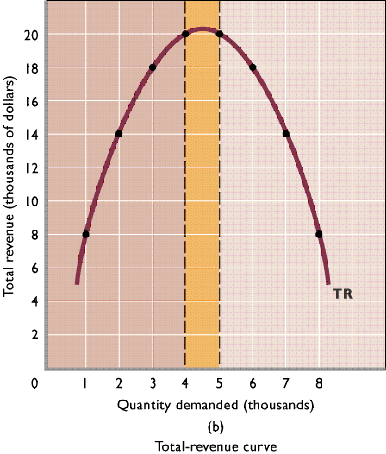
|
- As prices decrease we know that the
quantity sold will increase (law of
demand)
- As prices decreases and quantity
increases, why do total revenues (TR):
- increase at first
- and then decrease?
|
b. explanation of the shape of the TR graph : price
elasticity of demand
- what happens to the price elasticity of demand for
a product as the price decreases?
|
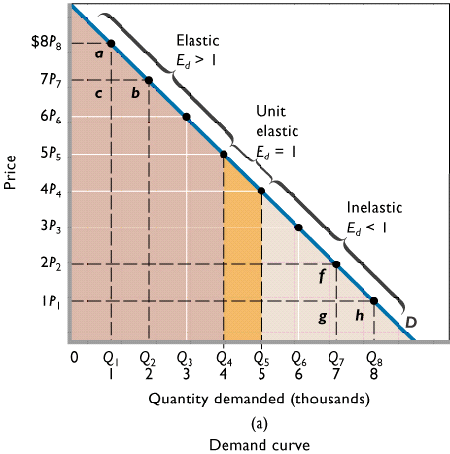
|
- at high prices demand is
elastic
- at low prices demand is
inelastic
|
|

|
- so as prices begin to decrease, and
demand is elastic, TR will increase
- as prices continue to decrease demand
becomes inelastic and TR decline
|
1. Large Crop Yields ("Bumper Crops")
- Inelastic demand for agricultural products helps to
explain why bumper crops depress the prices and total
revenues for farmers.
2. Government Excise Taxes
- Governments look at elasticity of demand when levying
excise taxes.
- Excise taxes on products with inelastic demand will
raise the most revenue and have the least impact on quantity
demanded for those products.
- More below (Excise Tax and Efficiency Loss).
3. Decriminalization of Illegal Drugs
- What will happen to price?
- What will happen to quantity used?
- Proponents: Demand is inelastic
- Demand for cocaine is highly inelastic and
presents problems for law enforcement.
- Stricter enforcement reduces supply, raises prices
and revenues for sellers, and provides more incentives
for sellers to remain in business.
- Crime may also increase as buyers have to find
more money to buy their drugs.
- Opponents: Demand is elastic
- Opponents of legalization think that occasional
users or "dabblers" have a more elastic demand and
would increase their use at lower, legal prices.
- Removal of the legal prohibitions might make drug
use more socially acceptable and shift demand to the
right.
4. Drug Busts and Street Crime
5. Minimum Wage (how much unemployment?)
6. Price Discrimination: Why Different Consumers Pay
Different Prices
a. Sellers often charge different prices for
goods based on differences in price elasticity of
demand.
b. The ability to charge different prices depends on
some market power; that is, some ability to control price
(unlike the competitive model where all buyers and sellers
exchange at exactly the same price).
c. EXAMPLES -- Customers are grouped according to
elasticities.
|
QUESTIONS:
- Who pays the higher price:
A. The person with the more
elastic demand, or
B. The person with the less elastic
demand ?
- What happens to Total
revenue?
|
- CHILDREN / ADULTS / SENIORS: Who pays more?
Why?
- COLLEGES: students with different incomes and
financial aid -- Who pays more? Why?
- ELECTRICITY: heating or lighting? homes or
businesses? -- Who pays more? Why?
- DOCTORS: insured patients or uninsured? -- Who
pays more? Why?
- AIR TRAVEL: business travellers or vacationers?
-- Who pays more? Why?
- MOVIES / SKIING / GOLF: adults or children? --
Who pays more? Why?
- RAILROADS: expensive cargo or inexpensive cargo?
-- Who pays more? Why?
1. Definition: Excise tax
2. Examples:
3. Excise tax and the supply curve
4. Incidence of Taxes and Price Elasticity of
Demand
a. "With a specific supply curve, the more
inelastic the demand for a product, the larger the portion
of the tax shifted to consumers."
b. Government Revenue and Price Elasticity of
Demand
c. Allocative Inefficiency and Price Elasticity of
Demand
d. efficiency loss: definition
"the sacrifice of net benefit accruing to
society because consumption and production of the taxed
product are reduced below their allocatively efficient
levels"
e. graphically: smaller quantity
5. Why DO they tax alcohol, cigarettes, and
gasoline?
6. Efficiency loss is one result of an excise or sales
tax.
a. MSB=MSC Approach (yellow page):
- if there are no externalities what is the
allocatively efficient quantity?
- what is the quantity with the excise tax?
- assuming no externalities do excise taxes result
in an UNDERallocation or an OVERallocation of
resources?
- The efficiency loss is the sacrifice of net
benefit accruing to society because consumption and
production of the taxed product are reduced below their
allocatively efficient levels.
b. Consumer and Producer Surplus Approach
- The figure below illustrates the concept of
efficiency loss, which occurs as a result of an excise
tax or sales tax.
- The efficiency loss is the reduction of well being
(consumer and producer surplus) that occurs because there
will be less produced at the higher price caused by the
tax.
- The efficiency loss is the sacrifice of net
benefit accruing to society because consumption and
production of the taxed product are reduced below their
allocatively efficient levels.
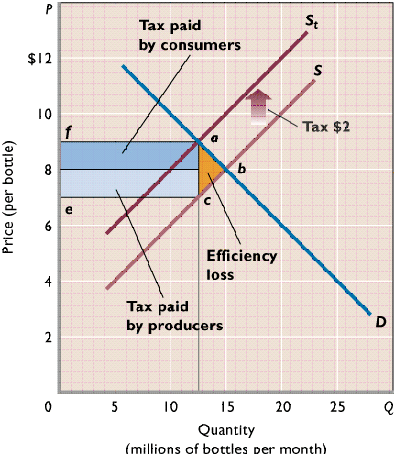
b. Elasticities play a role in determining the extent of
the efficiency loss. Other things being equal, the greater the
elasticities of supply and demand, the greater the efficiency
loss of a particular tax.
c. Qualifications to the analysis relate to the idea that
the goals of tax policy may be more important than the goal of
minimizing efficiency losses from taxes. Two examples are
given.
(1) Redistributive goals - Excise taxes placed
on luxury items in 1990 resulted in efficiency losses, but
the benefits from redistributing income from the wealthier
consumers who buy luxury items may have been worth the loss
in efficiency. However, these luxury taxes were unpopular
and have been repealed.
(2) Reducing negative externalities-If there is less
alcohol and tobacco consumption as a result of excise taxes,
the taxes may have socially desirable consequences.

Qd
or Qd
?
Qs
or Qs
?


